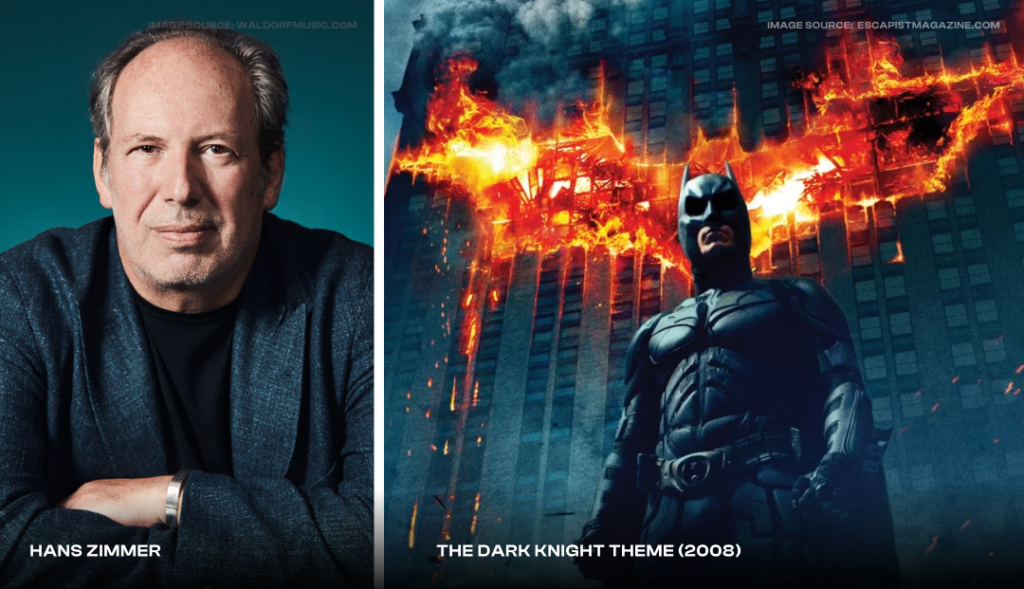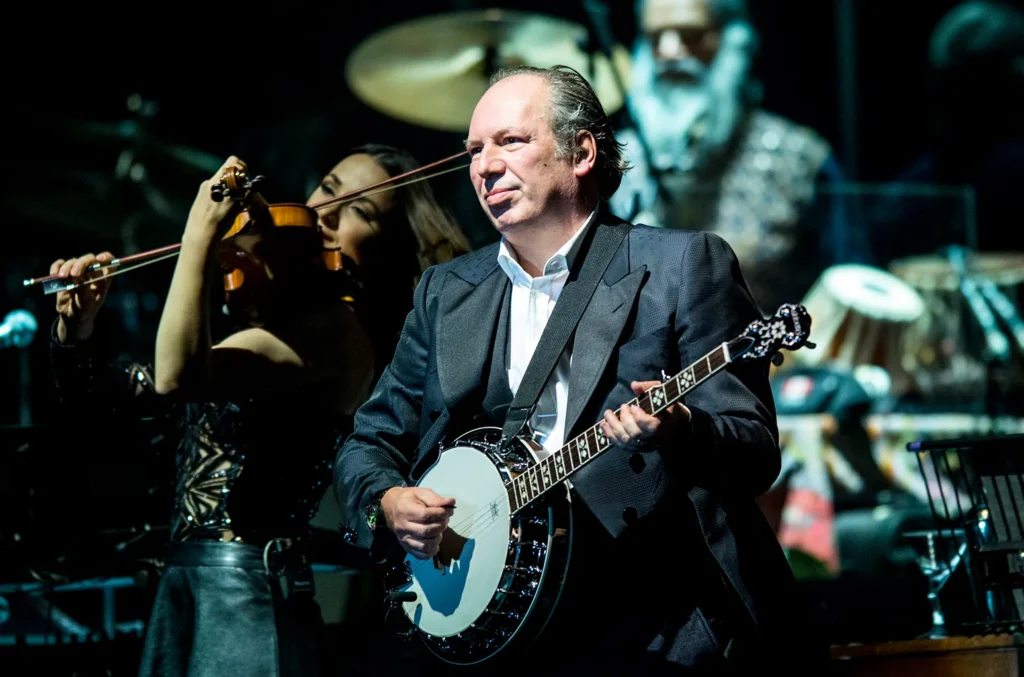In the realm of music composition, certain music composers stand out not only for their exceptional talent but also for their distinct and recognisable signature styles. These music composers have left an indelible mark on the world of music, and their work continues to captivate audiences across generations. In this article, we will delve into the unique styles of four renowned music composers, each celebrated for their exceptional contributions to the world of music.
Bernard Herrmann: The Music Composer Who Paved the Way

Bernard Herrmann’s collaboration with Oscar Welles, Alfred Hitchcock or Martin Scorcesse resulted in some of the most iconic and suspenseful film scores in cinematic history. His signature style is characterised by:
Tense and Thrilling
Herrmann had an unparalleled ability to create tension and suspense through music. His scores for films like “Psycho” and “Vertigo” are prime examples of this mastery.
Unique Instrumentation
Herrmann frequently used unconventional instrumentation, such as the eerie sound of the theremin in “The Day the Earth Stood Still,” to create a distinct sonic atmosphere. Herrmann’s music is typified by frequent use of ostinati (short repeating patterns) which creates the ability to portray other elements of the film
Psychological Depth
His compositions often delved into the psychological and emotional aspects of the characters and stories. Herrmann’s music added layers of complexity to Hitchcock’s films.
Ostinati and Atmosphere Creation
Herrmann’s music is typified by frequent use of ostinati (short repeating patterns), which creates the ability to portray other elements of the film. His unique approach to using these recurring motifs enhances the atmosphere of the films he scored. Whether it’s the repetitive, piercing strings in “Psycho” intensifying the shower scene or the persistent, haunting notes in “Vertigo” heightening the suspense, Herrmann’s mastery of ostinati contributed to the psychological depth of the movies.
This distinctive technique allowed him to craft music that not only underscored the tension but also delved into the psyche of the characters and stories, adding layers of complexity to Hitchcock’s and other directors’ films.
- “The Day the Earth Stood Still” (1951) – The eerie and otherworldly theremin score that adds to the suspense of the sci-fi classic.
- “Vertigo Suite” (1958) – The hauntingly elegant music that adds depth to Alfred Hitchcock’s Vertigo.
- “North by Northwest Theme” (1959) – The suspenseful and adventurous theme of Hitchcock’s classic thriller.
- “The Twilight Zone Theme” (1959) – The eerie and iconic music that introduces viewers to the mysterious world of The Twilight Zone.
- “Psycho Theme” (1960) – The infamous screeching strings in the iconic shower scene.
- “Taxi Driver Theme” (1976) – The haunting and atmospheric score that accompanies Travis Bickle’s descent into urban chaos in Martin Scorsese’s Taxi Driver.
Ennio Morricone: The Sound Innovator

As much as Ennio Morricone’s compositions are synonymous with the Spaghetti Western genre, his influence extends far beyond and has span across countless movies and genres over the decades. His signature style is marked by:
Unconventional Instruments
Morricone’s innovative use of instruments, including whistles, electric guitars, and haunting vocals, gave his scores a distinctive and haunting quality. The iconic theme from “The Good, the Bad, and the Ugly” is a prime example.
Sonic Storytelling
Ennio Morricone was a master of embracing silence as a crucial narrative tool within his compositions. While many music composers focus on the notes played, Morricone understood the power of the pauses in music.
He used moments of profound silence strategically, allowing the absence of sound to convey as much emotion and tension as the music itself. This unconventional approach created a unique auditory experience that deepened the impact of his scores. In films like “The Good, the Bad, and the Ugly,” the moments of eerie quiet between bursts of iconic whistling and guitar heightened the anticipation and suspense.
Morricone’s ability to harness the language of silence in his compositions remains a rare and intriguing aspect of his signature style, setting him apart as a true innovator in the world of film music.
Evocative Melodies
Morricone’s melodies are both evocative and emotionally charged. His ability to convey complex emotions through music is showcased in classics like “Cinema Paradiso.”
Experimentation
Throughout his career, Morricone was not afraid to experiment with sound, often pushing the boundaries of what film music could be. His scores are a testament to his creative fearlessness.
- “The Good, the Bad, and the Ugly Theme” (1966) – The iconic whistling and guitar that define the Spaghetti Western genre.
- “Once Upon a Time in the West Theme” (1968) – The mysterious and captivating theme from the classic Western.
- “Cinema Paradiso” (1988) – The evocative melody that stirs deep emotions and memories.
- “Gabriel’s Oboe” (1986) – The hauntingly beautiful oboe piece from The Mission.
- “The Untouchables Theme” (1987) – The dramatic and pulsating score that accompanies the crime saga.
The Maestro John Williams: The Music Composer of Adventure

When it comes to composing music that transports audiences to fantastical realms and epic adventures, John Williams is the undisputed maestro. With a career spanning several decades, Williams has crafted some of the most iconic and unforgettable film scores in cinematic history. His signature style is characterised by:
Musical Subtext: Characters Unveiled Through Harmony
Williams possesses an unparalleled knack for creating instantly recognisable and unforgettable themes. From the heroic fanfare of “Star Wars” to the whimsical magic of “Harry Potter,” his melodies are etched into our cultural consciousness.
John Williams possesses a rare talent for using musical subtext to unveil the inner workings of characters. Beyond crafting memorable character themes, he employs subtle variations and harmonies to convey their development and emotions throughout a film.
For example, in “Star Wars,” the evolution of Darth Vader’s theme from a menacing march to a more complex, emotionally resonant melody mirrors the character’s journey from villainy to redemption. Similarly, in “E.T. the Extra-Terrestrial,” the character theme for Elliott and the extraterrestrial visitor grows and changes, reflecting the deepening bond and mutual understanding between them.
Williams’ ability to use music as a dynamic storytelling tool, enriching character depth and narrative complexity, sets him apart as a master of cinematic composition.
Orchestral Brilliance
His orchestrations are lush, grand, and meticulously crafted. Williams often employs a full symphony orchestra, creating a rich and immersive sound that enhances the cinematic experience.
Emotional Depth
Beyond the epic adventures, Williams infuses his compositions with emotional depth. His music can evoke a wide range of feelings, from the soaring triumph of “E.T. the Extra-Terrestrial” to the poignant nostalgia of “Schindler’s List.”
- “Star Wars” (1977) – The powerful and unforgettable music that defines the “Star Wars” series.
- “E.T.” (1982) – The soaring music that accompanies E.T.’s magical flight.
- “Schindler’s List” (1993) – The moving violin piece that captures the emotions of Schindler’s List.
- “Harry Potter” (2001) – The magical and instantly recognizable tune from the “Harry Potter” movies.
- “Jurassic Park” (1993) – The majestic score that brings dinosaurs to life.
Hans Zimmer: The Sonic Architect

Hans Zimmer is a modern musical genius known for his groundbreaking work in film scoring. His signature style is characterised by innovation, experimentation, and a mastery of technology. Here are some key elements of his style:
Blurring the Line Between Music and Sound Design
Hans Zimmer is renowned for his groundbreaking approach to film scoring, which often blurs the line between music and sound design. He doesn’t limit himself to traditional musical instruments but instead embraces a wide array of unconventional sounds and techniques. Zimmer’s ability to integrate electronic elements, synths, and unconventional instruments into his compositions is remarkable.
What sets him apart is his knack for transforming everyday sounds into musical elements. For example, in “Inception,” he used slowed-down versions of Edith Piaf’s “Non, je ne regrette rien” as a recurring motif, turning a classic song into a haunting musical element that underscored the film’s dreamlike quality.
This unique ability to push the boundaries of sound and music, blurring the distinction between the two, is a testament to Zimmer’s innovative sonic storytelling. It adds a layer of complexity and depth to his compositions that goes beyond traditional film scoring.
Synth and Soundscapes
Zimmer often incorporates electronic elements, synths, and unconventional instruments into his compositions, creating unique and immersive soundscapes. This is particularly evident in his work on films like “Inception” and “Blade Runner 2049.”
Minimalism and Repetition
Zimmer’s music frequently employs minimalist techniques, using repetition to build tension and anticipation. This can be heard in the iconic “Dunkirk” score, where a ticking watch becomes a central motif.
Collaboration and Adaptation
Zimmer is known for collaborating closely with directors and pushing the boundaries of film scoring. His ability to adapt his style to suit the needs of each film is a testament to his versatility.
- “The Twilight Zone Theme” (1959) – The eerie and iconic music that introduces viewers to the mysterious world of The Twilight Zone.
- “Blade Runner 2049” (2017) – The atmospheric and futuristic music of Blade Runner.
- “He’s a Pirate” (2003) – The exhilarating theme that accompanies Captain Jack Sparrow.
- “The Dark Knight Theme” (2008) – The ominous and powerful music of Batman’s world.
- “Dunkirk” (2017) – The suspenseful score with a ticking watch motif that intensifies the movie’s tension.
- “Time” (2010) – The emotionally charged composition that transcends time in Inception.
In conclusion, these four music composers — John Williams, Hans Zimmer, Ennio Morricone, and Bernard Herrmann — have made an indelible mark on the world of music composition. Their unique signature styles have not only enriched the world of film and classical music but have also left an enduring legacy that continues to inspire and captivate audiences around the globe. Each composer’s ability to evoke emotions, create memorable melodies, and push the boundaries of their craft has made them true legends in the world of music.

